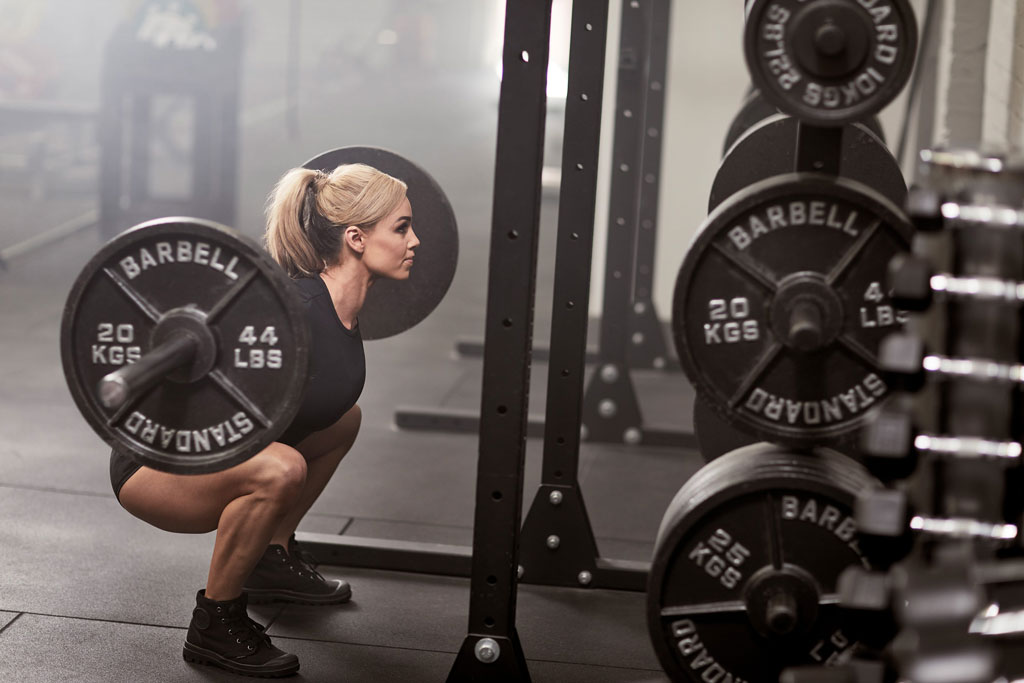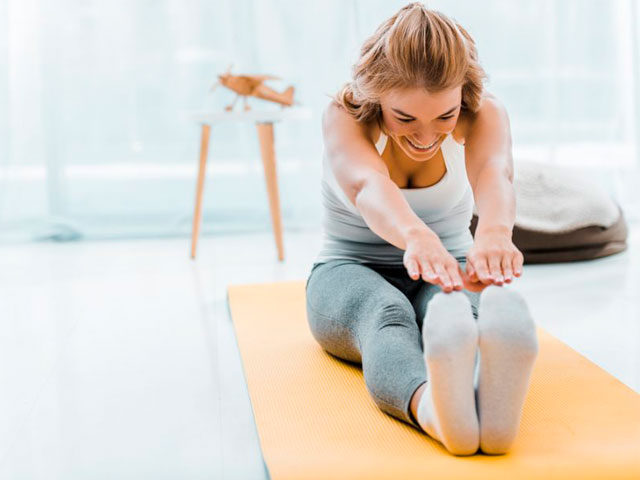I was once an ordinary guy with thin legs. Why? Because I didn’t squat. I came up with new excuses, just not to squat: it is bad for the spine, knee joints suffer from squats, the exercise is too difficult. To get away from squats and calm my conscience, I did all the other leg exercises, but the muscles stubbornly refused to grow.
One day I got tired of all this. I was tired of thin legs and set myself a serious task: to learn how to squat with a weight exceeding 225 kg. After many years of hard training, careful planning, learning the subtleties of technique and the biomechanics of the exercise, I have achieved my goal. My one- rep max squat is 300kg . And I am pleased to state that thanks to the work done and the kilotons of the lifted weight, my legs no longer look like matches.
If you want to build strong and powerful leg muscles, remember one rule: you must squat!
Attention to detail!
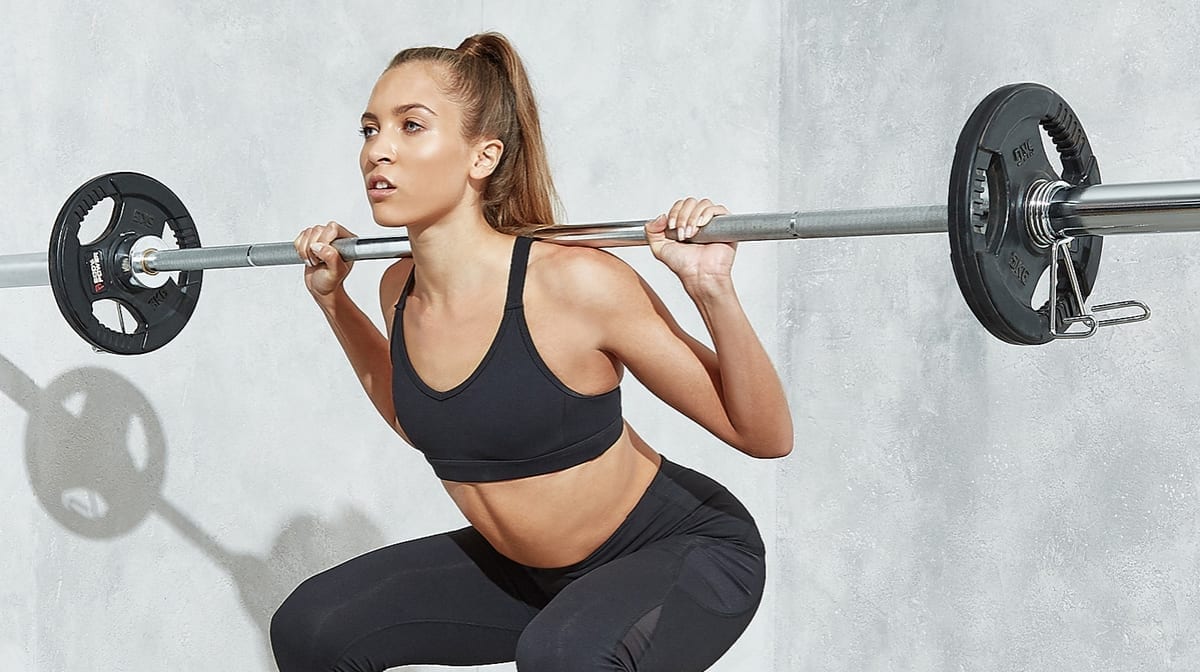
1. Equipment
Equipment always affects the result, especially when a heavy barbell rests on your shoulders during the exercise. Let’s talk about the items of equipment that will help you achieve high results.
Footwear
The main task of running shoes or tennis shoes is to evenly distribute body weight and cushion the foot. In powerlifting, we don’t need all of this. When you squat, you push off the ground, and the laws of physics say that at this moment, a reaction force emanates from the support. What happens when you have cushioning shoes on your feet? In a closed mechanical system, an object appears that steals some of your kinetic energy. It also makes it harder for you to control your body position in these shoes. If you squat in sneakers, you know that your knees often fall inward, and in general, you are not so confident on your feet.
I recommend using hard-soled shoes. Normal sneakers are a good choice, but I prefer powerlifting shoes or weightlifting shoes. The advantage of weightlifting shoes is that they have a very dense sole with a small solid heel.
With a slightly raised heel, you will be in a more ergonomic position and will be able to push off with your heel and mid-arch. It’s more efficient this way.
Weightlifting belt
Do I need to use a weightlifting belt? Yes, in squats, it can play the role of a secret ingredient. A solid belt will act as a fulcrum for your core, anchor your lumbar region, and help keep your back in a neutral position.
The opinion that a weightlifting belt weakens the muscles of the back is very far from the truth. Science shows that the use of a belt does not weaken, but strengthens the muscles of the trunk, because the belt gives them support to lean on and from which they can push off.
The problem is that many athletes fix the belt too low. The weightlifting belt should not dangle around the waist, its place around the abdominal wall, for which it will provide support and support. Find the point where the tense abdominal wall protrudes as far forward as possible, and secure the belt at this level.
I advise you to buy a tight curved belt at least 10 cm wide and at least 10-13 mm thick.
Knee pads and knee braces
Knee pads and knee braces keep warm and provide additional support to the knee joints. I like the regular elastic knee pads that look like a sleeve. They can be quickly pulled on and removed just as quickly without unnecessary effort and body movements. In addition, there is evidence that knee braces place excessive pressure on the patella.
I am pleased to know that I and only I lift the bar, and in the new personal record there is no merit in knee braces.
a piece of chalk
Many of you are rubbing your hands with chalk. Chalk absorbs moisture and gives you a tighter grip on the neck. However, since the bar rests peacefully on your shoulders while squatting, there is no urgent need for chalk on your hands.
However, if you squat with a low barbell lock, chalk can come in handy. It will help you keep the bar on your back and prevent it from rotating. So I recommend taking a large piece of chalk and rubbing it on your back. Do not be afraid to stain your shirt with chalk, especially if you are going to take on a heavyweight.
Wrist straps
If during squats you fix the bar at the level of the trapezius muscles, the wrist straps can be omitted. But if you prefer to lock the bar lower, at the level of the rear deltas, you will need them. The wrist straps help keep the wrist in place and help prevent pain in the wrist and elbow joints.
Many athletes wrap their wrist straps too low, which is wrong. There is little use from the wrist straps located at the level of the hand. To support your joints, you must cover the area above and below the wrist joint.
2. Biomechanics of squats
When the turn of the squat comes, many simply climb under the barbell, remove it from the stops and begin the exercise. Not the best strategy. You must have a solid plan of action, starting with taking the starting position and ending with getting out from under the projectile.
Preparation for work
Stand under the barbell and lock it on your back in the desired position. Remember, your center of gravity is in the same plane as the center of your foot, and your working weight should remain in that plane. Take a deep breath. Squeeze your buttocks and push your pelvis forward to remove the bar from the stops.
After you have removed the projectile, you can move away from the rack. I do this in three steps because it’s easier, more efficient, and more reliable. Having removed the barbell, let it calm down, do not rush to step back. When you’re ready, take a small step with one foot. With your leg locked in a stable position, take a slightly larger step with your other leg. Finally, rearrange the first leg so that both legs are in line.
Now you can correct the position of the feet. I do not advise placing your feet too close together or too wide. Position your feet as if you are about to make a jump from a place.

The next important point: you should not turn the stops too much. If the pivot angle is close to 45 degrees, you have overdone it. In fact, it is very simple to give your feet an optimal position: as soon as you remove the barbell and take the starting position, tighten your gluteal muscles. This will naturally rotate your feet to the correct angle.
Breath
Most athletes give the muscles too little oxygen when working with large weights. Before squatting, imagine that this is your last breath, and in a second the whole room will be filled with water. Taking a deep breath will help you tighten your abdominal wall and engage your deep abdominal muscles. In addition, taking a deep breath and then holding the breath will make it easier for you to keep your back in a neutral position.
Taking a deep breath, contract your abdominal muscles, push the abdominal wall forward, but do not exhale. At the same time, do not try to “squeeze” the abdominal muscles, but, as it were, push the abdominal wall outward. Imagine that I want to punch you in the stomach. What would you do in this case? You would be tense. Do the same while squatting. The abdominal wall helps stabilize the lower back. Be sure to make sure she’s tense.
Hip movement
Many people refer to squats as up and down movements. In fact, it is also a forward and backward movement. Draw in full lungs of air, contract the muscles of your torso, engage your gluteal muscles and begin to move your hips back. Sit down between your legs.
By using the muscles in your thighs, glutes and lower back, you are using the strongest and largest muscle mass in your body. If you do everything correctly, then, having reached the bottom point, you should begin to rise naturally.
Once you start climbing, think about more than just going up. Contract your glutes and guide your hips forward. Even if you’re halfway there, block the urge to jerk upward and keep thinking about moving your hips forward.
After finishing the squat, tighten your glutes. This will help you perfectly align your spine and hips in the same plane as the barbell.
Knees
While lowering, turn your knees outward so that they point in the same direction as your toes. Prevent your knees from collapsing inward or forward. Moving your knees forward stretches your calf muscles, which forces you to lean forward as well. Where does this lead? Leaning forward too much risks bending your back, which is very dangerous.
In addition, moving your knees forward can force you to stop ahead of time, and full-range squats are needed to maximize strength and mass.
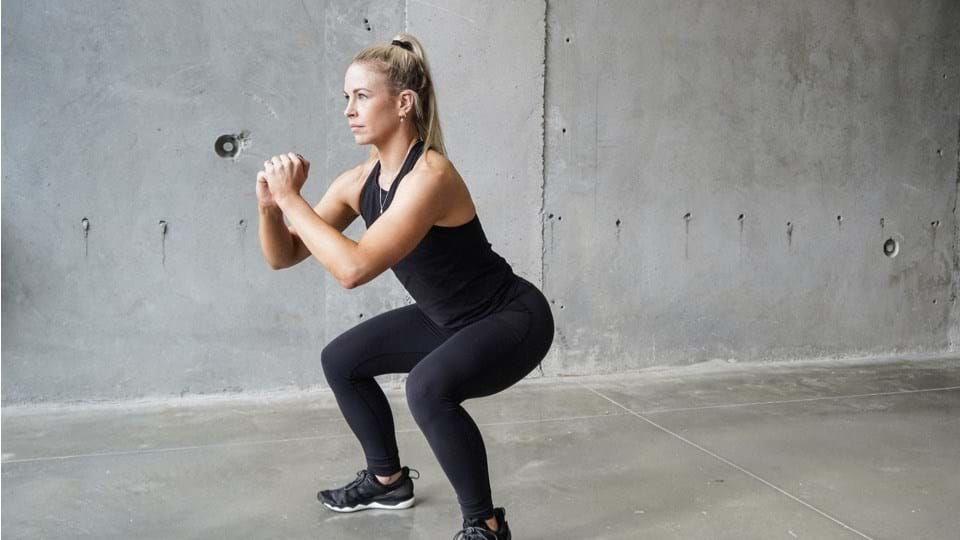
Back position
I constantly hear how mentors demand from their charges that they keep their backs straight. In general, this is correct, but there is one caveat. Even if you really want to keep your back upright, the angle will change depending on your physique. If you have long thighs and a short torso, you will have to lean forward more to squat deep enough to hold the bar over the center of your foot. People with short thighs and a long torso will find it easier to stay in a near-upright position.
No matter how much you lean forward, keep your back in a neutral position. In the neutral position, your back stays straight even when you lean forward. The danger comes when you do the so-called pelvic “nod” and round your lower back.
Depth
A squat is considered deep enough if your hip joints drop below the level of your knees. In my opinion, squatting should be as deep as possible without risk of injury. Of course, people with long legs find it more difficult to squat deep enough without a pelvic nod. However, almost everyone can learn to do deep enough squats.
Boom trajectory
In any phase of the squat, the bar should remain in a plane that passes through the center of the foot, or be in close proximity to this plane. In this case, the bar is directly above your center of gravity and you can transfer maximum force from your legs to the bar.

Of course, even if you do really good squats, the barbell trajectory may not be perfectly vertical. Everything is fine. However, keep in mind that the smaller the deviation of the projectile from the given plane, the more effective and simple the movement will be.
3. Bar fixation level
Chances are, most of you are locking the bar at the level of your trapezius muscles. For many, it is indeed easier to squat with a high barbell lock, and it is also more comfortable and easier to keep your back straight. However, there are athletes who prefer to fix the bar lower.
With low fixation, the bar is lowered 5 cm below the trapezoids to the level of the rear deltas. This position is considered less comfortable for the muscles of the shoulder girdle, but the huge advantage of low bar fixation is that it gives most people an increase in power. With a low fixation of the bar, you begin to squat with a slight forward bend, most importantly, do not forget to keep your back straight during the descent.
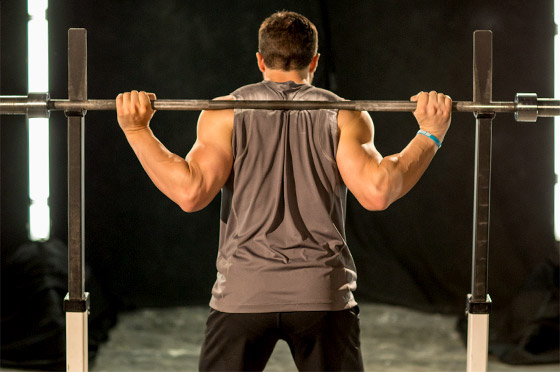
Use the tightest grip possible to lock the bar in this position. Place the barbell on the trapezius muscles as in a high hold and let it slide down to the next shoulder. When the bar stops, you will feel it. Fix it here.
Which projectile fixation option is right for you? Try both. As a rule, stocky people are more suitable for a high barbell lock, while people with long legs and short torso may like the fixation of the projectile at the level of the deltoid muscles.

